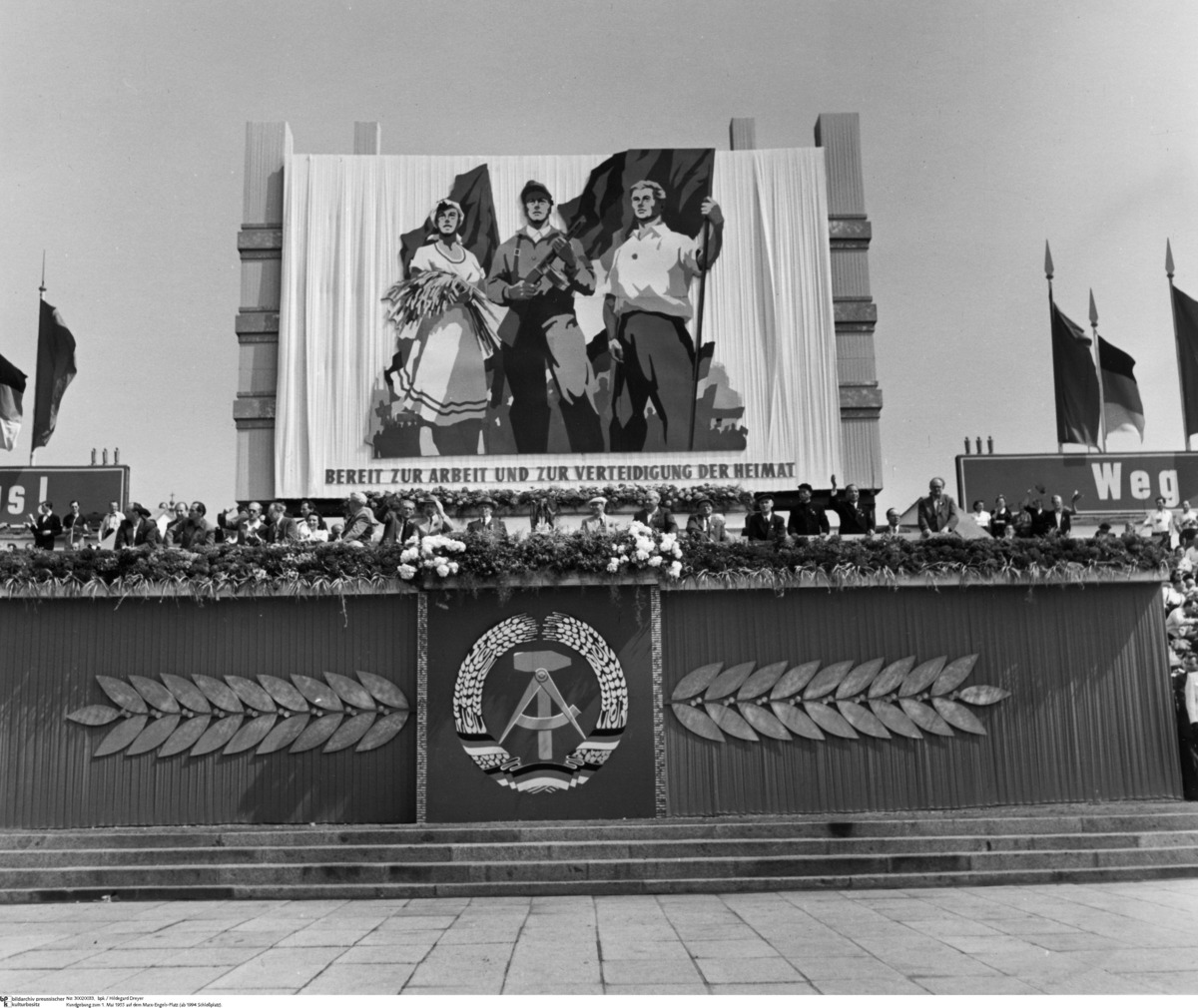Abstract
The Federal Republic became integrated into the Western system of
alliances when the Bonn-Paris Conventions took effect on May 5, 1955.
The SED regime responded by assuming a confrontational posture during
that year’s May festivities and declaring May of 1955 “Battle May.” For
the first time, Factory Combat Groups figured prominently in marches in
East Berlin and other GDR cities. According to the official SED party
line, these combat groups were deployed to protect factories; in
reality, however, they were paramilitary groups, and together with the
Barracked People’s Police [Kasernierte
Volkspolizei], they were supposed to compensate for the lack of
compulsory military service in the GDR.
Here, we see the VIP stand with Walter Ulbricht (left of center, with
hat, saluting), Wilhelm Pieck (on Ulbricht’s right), and the head of the
“West”-KPD, Max Reimann (on Ulbricht’s left). Behind the stand, a
propaganda poster in the Socialist Realist style bears the words “Ready
for work and the defense of the homeland.” A farm woman (left), a
soldier (middle), and a “worker” (right) embody the unity of labor –
with the “worker” being represented in such a way that it is impossible
to determine whether he is an industrial worker, an office worker, or
member of the intelligentsia.
